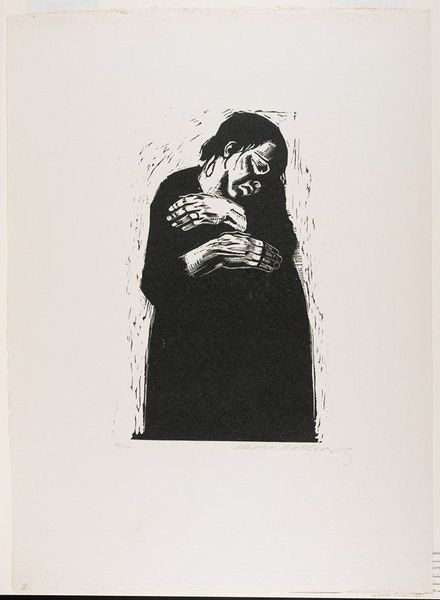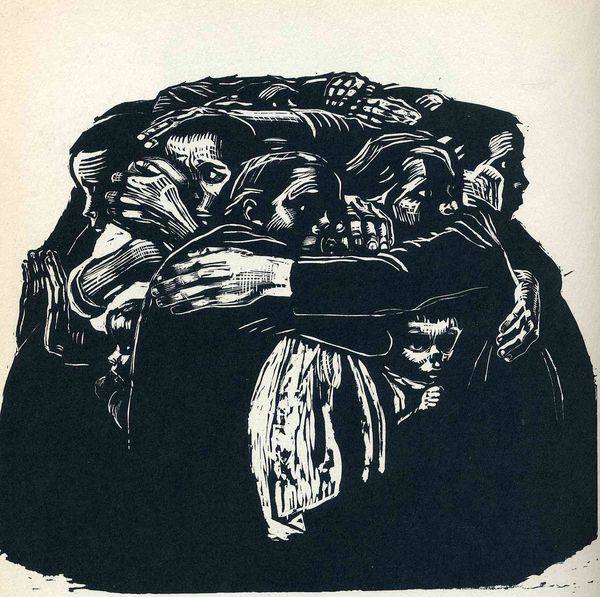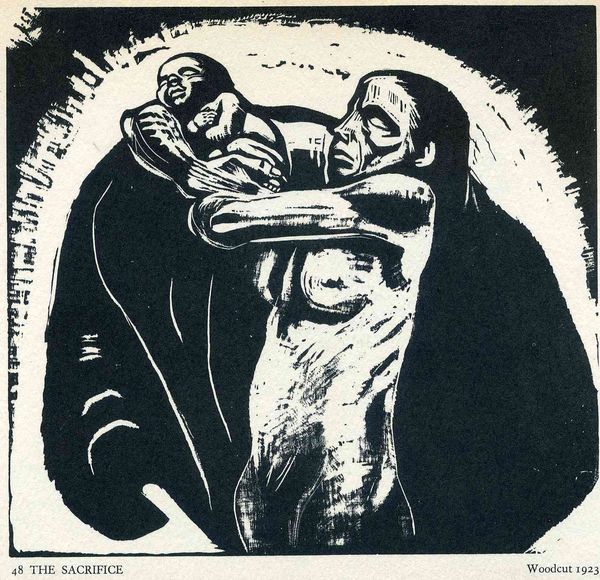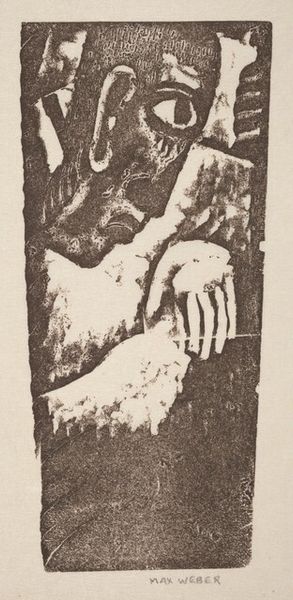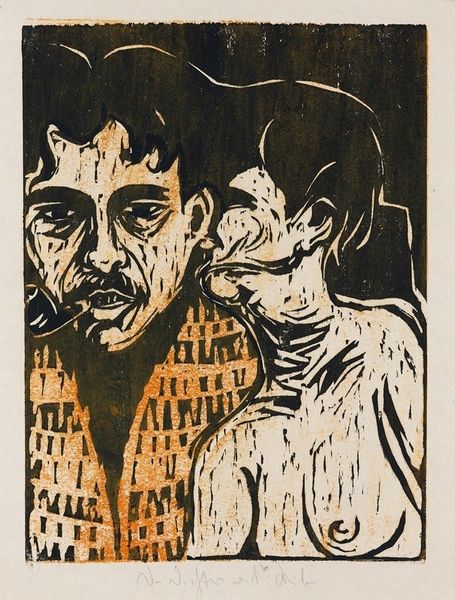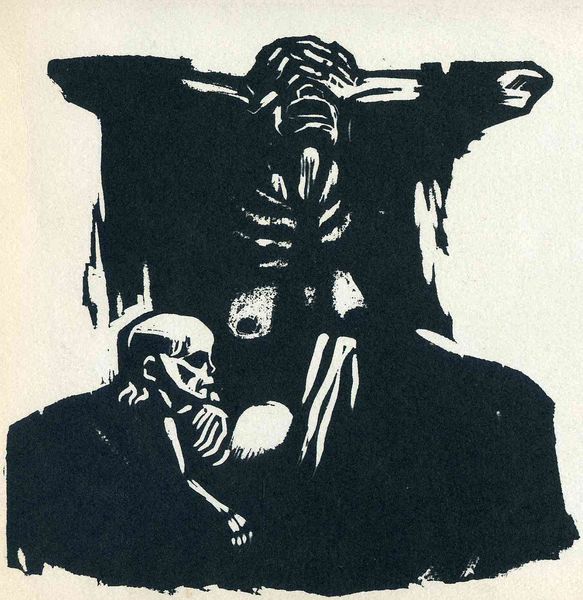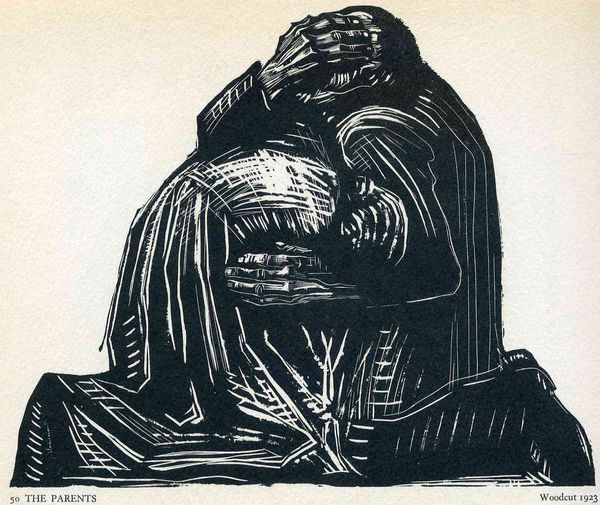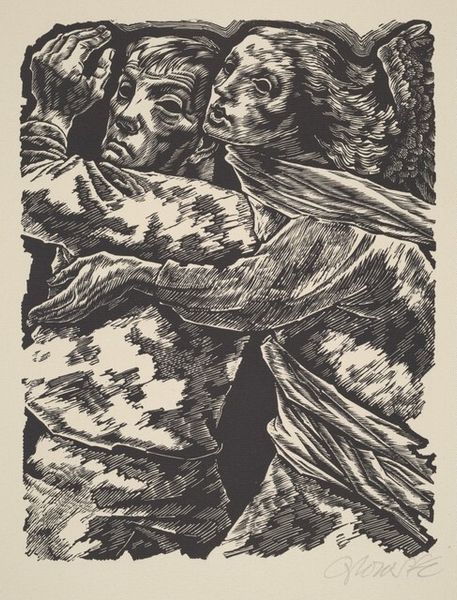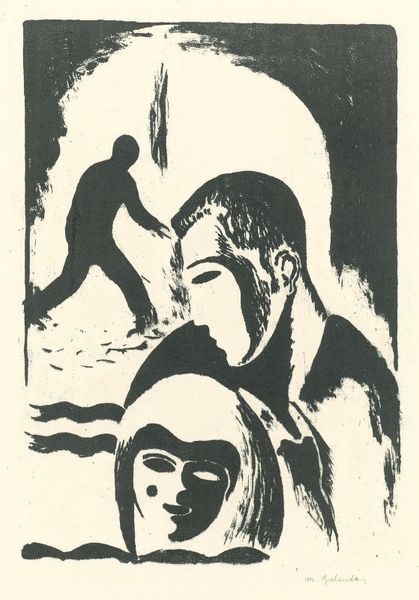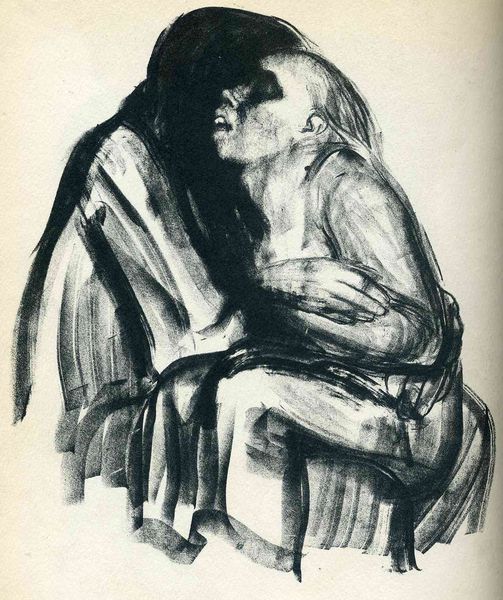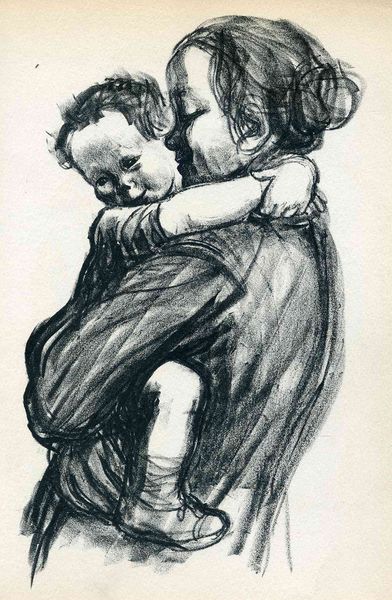
drawing, print, woodcut
#
portrait
#
drawing
#
ink drawing
# print
#
german-expressionism
#
figuration
#
expressionism
#
woodcut
#
monochrome
Copyright: Public domain
Curator: What strikes me first about Kathe Kollwitz's 1921 woodcut, "The Widow I," is the sheer weight of sorrow conveyed in this monochrome print. Editor: Yes, there's a deep vulnerability. Her hands, crossed so tightly, they're almost skeletal, conveying both self-protection and a desperate attempt to hold onto something intangible. You immediately sense loss. Curator: Absolutely. Kollwitz experienced immense loss herself, particularly the death of her son in World War I. It resonates through her recurring motifs. This work is a clear reflection on grief and survival, made universal. Note how she has shrouded her face. Editor: Thinking about process, a woodcut allows for a brutal simplicity. The stark contrast of black and white echoes the blunt reality of death. The cutting away is literally carving out absence and pain to build the piece. The physical labor feels connected to the widow’s burden. Curator: I agree. Look how Kollwitz is evoking the Pieta through a female figure. Consider how that familiar pose links her grief to centuries of mourning, familial loss, and social suffering, particularly during that time of profound economic crisis in Germany. Editor: But, the print medium itself makes a statement too. Unlike a unique painting or sculpture, it’s inherently reproducible, meant for distribution and broad access. So, is the act of grieving a solitary exercise or part of wider communal experience? Was it created for consumption, commiseration or resistance? Curator: Both, I suspect. Woodcuts made grief visible. The starkness of Expressionism cuts through sentimentality, serving to validate experiences often silenced, offering visual vocabulary for private pain. Editor: And consider its role as a social statement against war. Kollwitz transformed that artistic labor into something of cultural impact, which remains just as profound a statement about labor as life and grief a century on. Curator: Indeed. Thinking about the iconography then leads me to believe that such an exploration prompts deeper contemplation on trauma, remembrance, and social impact, while acknowledging its universality. Editor: For me, looking at "The Widow I" foregrounds the capacity for art to materialize loss into a concrete expression through carefully carved blocks of wood, leaving the viewer a touchstone to understanding profound sorrow.
Comments
No comments
Be the first to comment and join the conversation on the ultimate creative platform.
